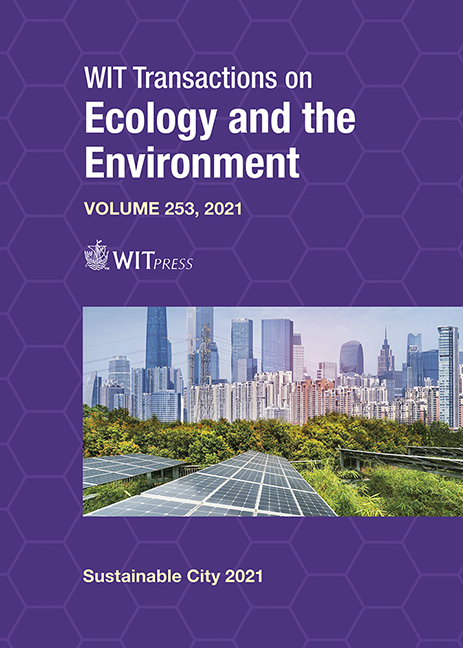SPACE NEEDED TO MAKE A CITY SUSTAINABLE AND NECESSARY CHANGES TO REACH IT: THE CASE OF GERMANY
Price
Free (open access)
Transaction
Volume
253
Pages
12
Page Range
229 - 240
Published
2021
Size
1,104 kb
Paper DOI
10.2495/SC210201
Copyright
Author(s)
UDO DIETRICH
Abstract
A city concentrates humans, apartments, services, factories, and other facilities. The city is in permanent exchange with its surrounding, receiving food, energy, water, materials and others while delivering products, formation etc. If that whole process would run in a way that it can run in the same way for all future generations, the city would be a sustainable one. As a consequence, it is not adequate to regard only the city scale; the city has to be investigated together with its surrounding. This paper investigates what a sustainable city could be. Starting from the human needs a liveable city is sketched regarding its density and internal organisation, land use, buildings, and their arrangement. The potential of harvesting renewable energies and food per land unit is estimated. The present demand leads to an immense need of land to cover it. To reach sustainability, three different strategies are possible: (a) keep the demand like it is; (b) reduce the demand by increasing efficiency; or (c) reduce the demand by a change of the lifestyle; and cover for (a) to (c) the remaining demand with renewable systems. The highest potential for strategy (b) is in the building sector (refurbishment) and transportation (electrical machines), (c) is touched for food production (widely vegetarian nutrition). Assuming that these changes are already realized, the demand of land for renewable production of energy and food is determined based on corresponding literature and statistical data. For Germany, the need of land exceeds the available land still by 50%. Strategies (a) and (b) led to a big improvement, but without strategy c) the target cannot be reached. That confirms the assumption that the available land for food production and harvest of renewable energies could prove oneself as another limited resource that might be even the dominant one.
Keywords
sustainable city, urban density, transportation network, harvesting renewable energies, space needed for food production and harvest of renewable energies, lifestyle, strategies to transfer cities into sustaina





